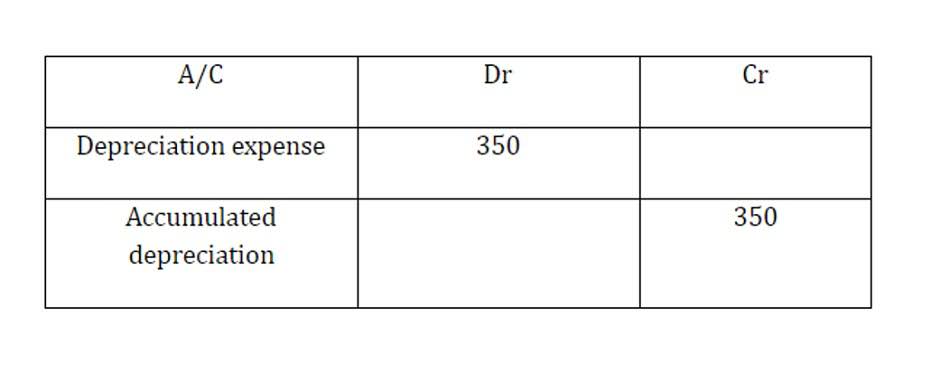
All balance sheet accounts are examples of permanent or real accounts. how is sales tax calculated A net loss would decrease retained earnings so we would do the opposite in this journal entry by debiting Retained Earnings and crediting Income Summary. Expense account balances are credited to reset them to zero, with corresponding debits made to the Income Summary account. The net balance in the Income Summary, which represents net income or loss, is then transferred to Retained Earnings by debiting the Income Summary and crediting Retained Earnings, completing the closure of the Income Summary.
1: Describe and Prepare Closing Entries for a Business
- Remember, dividends are a contra stockholders’ equity account.It is contra to retained earnings.
- Once all the necessary steps have been completed, you can confidently close the books and move forward with financial reporting and analysis.
- Proactively managing employee expense submissions and approvals will help ensure a smooth transition into the payroll and other compensation-related tasks.
- Expense accounts, which track costs incurred during the period, are also closed to the Income Summary account.
- The second part is the date of record that determines whoreceives the dividends, and the third part is the date of payment,which is the date that payments are made.
- The eighth step in the accounting cycle is preparing closingentries, which includes journalizing and posting the entries to theledger.
- Closing entries are a critical part of the accounting cycle, resetting temporary accounts for the new fiscal period.
The Retained Earnings account balanceis currently a credit of $4,665. Printing Plus has a $4,665 credit balance in its Income Summaryaccount before closing, so it will debit Income Summary and creditRetained Earnings. It is the end of the year,December 31, 2018, and you are reviewing your financials for theentire year. You see that you earned $120,000 this year in revenueand had expenses for rent, electricity, cable, internet, gas, andfood that totaled $70,000. Thebusiness has been operating for several years but does not have theresources for accounting software.

Cash and Credit Cards
- By identifying any unexpected changes, you can investigate and make any necessary adjustments before closing the books.
- Fixed asset management is a complex area that requires close attention to detail.
- Thethird entry closes the Income Summary account to Retained Earnings.The fourth entry closes the Dividends account to Retained Earnings.The information needed to prepare closing entries comes from theadjusted trial balance.
- You should recall from your previous materialthat retained earnings are the earnings retained by the companyover time—not cash flow but earnings.
- The T-account summary for Printing Plus after closing entriesare journalized is presented in Figure 5.7.
- The total debit to income summary should match total expenses from the income statement.
As you will learn in Corporation Accounting, there are three components to thedeclaration and payment of dividends. The first part is the date ofdeclaration, which creates the obligation or liability to pay thedividend. The second part is the date of record that determines whoreceives the dividends, and the third part is the date of payment,which is the date that payments are made.
Step 2 – closing the expense accounts:
As you will see later, Income Summary is eventually closed to capital. Business Consulting Company, which closes its accounts at the end of the year, provides you with the following adjusted trial balance as of December 31, 2015. The above entry increases the balance of retained earnings account. We’ll use a company called MacroAuto that creates and installs specialized exhaust systems for race cars. Here are MacroAuto’s accounting records https://www.bookstime.com/articles/outsourced-bookkeeping-solutions simplified, using positive numbers for increases and negative numbers for decreases instead of debits and credits in order to save room and to get a higher-level view. Once all the necessary steps have been completed, you can confidently close the books and move forward with financial reporting and analysis.
Step 3: Close Income Summary to the appropriate capital account
- The Income Summary account has a credit balance of $10,240(the revenue sum).
- This is closed by doing the opposite – debit the capital account (decreasing the capital balance) and credit Income Summary.
- The trial balance shows the ending balances of all asset, liability and equity accounts remaining.
- Temporary (nominal) accounts are accounts thatare closed at the end of each accounting period, and include incomestatement, dividends, and income summary accounts.
- The closing entries are dated in the journal as of the last day of the accounting period.
We have completed the first two columns and now we have the final column which represents the closing (or archive) process. Dividends, representing earnings distributed to shareholders, are closed to the Retained Earnings account. For example, $50,000 in dividends is debited from Retained Earnings, reducing the balance available for future use or distribution. The process of using of the income summary account is shown in the diagram below. Prepare the closing entries for Frasker Corp. using the adjustedtrial balance provided. Notice that the Income Summary account is now zero and is readyfor use in the next period.

The above entry decreases the balance of retained earnings account. Below are the T accounts with the journal entries already posted. The year-end close process can be a daunting task, but with a comprehensive checklist and a solid understanding of the key activities, you can ensure a smooth and efficient close. By following the closing entries steps outlined in this guide, you’ll be well on your way to delivering accurate and timely financial information to your stakeholders. And so, the amounts in one accounting period should be closed so that they won’t get mixed with those in the next period.

The eighth step in the accounting cycle is preparing closingentries, which includes journalizing and posting the entries to theledger. In this chapter, we complete the final steps (steps 8 and 9) ofthe accounting cycle, the closing process. This is an optional stepin the accounting cycle that you will learn about in futurecourses. Steps 1 through 4 were covered in Analyzing and Recording Transactions and Steps 5 through 7were covered in The Adjustment Process.